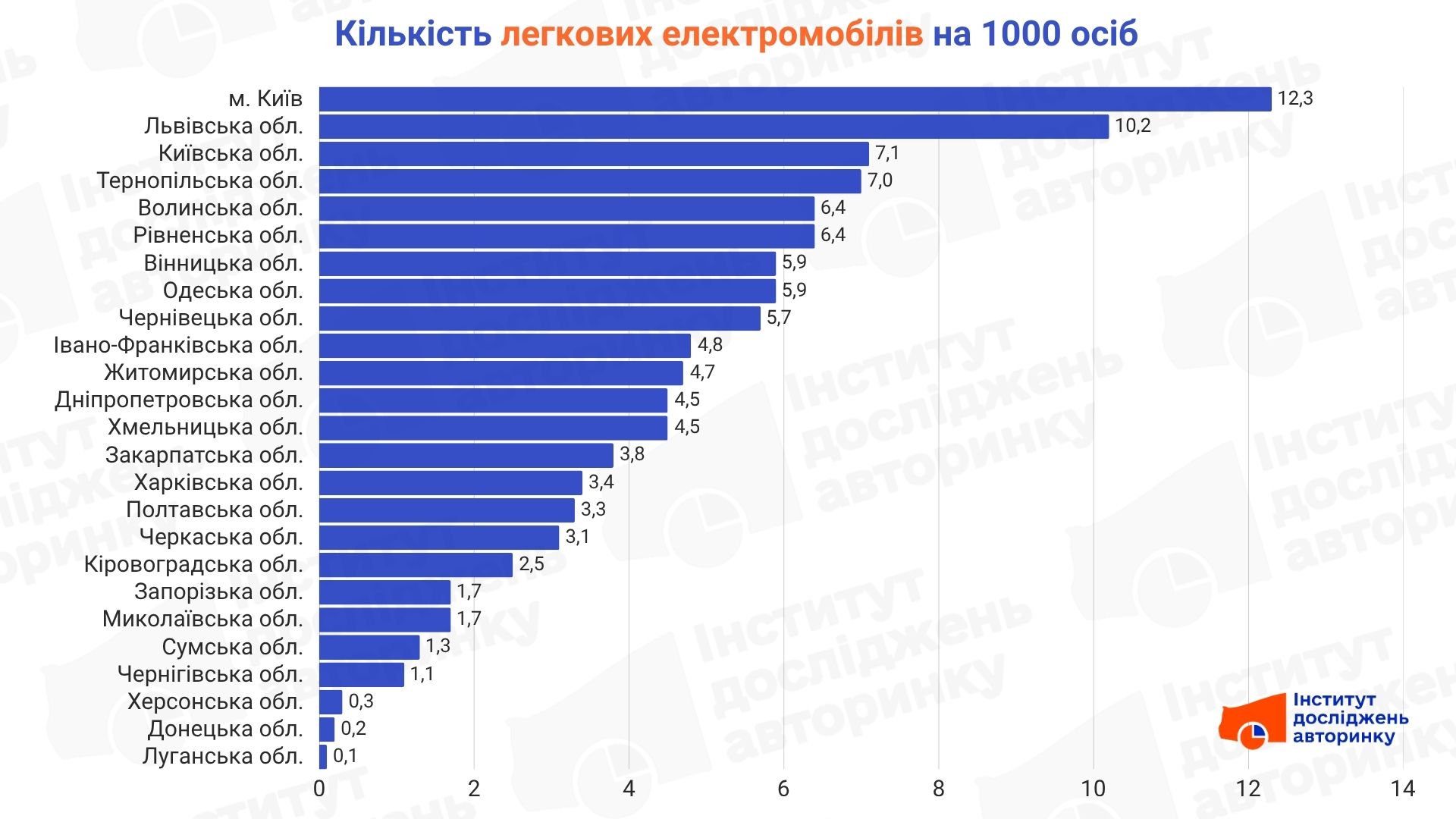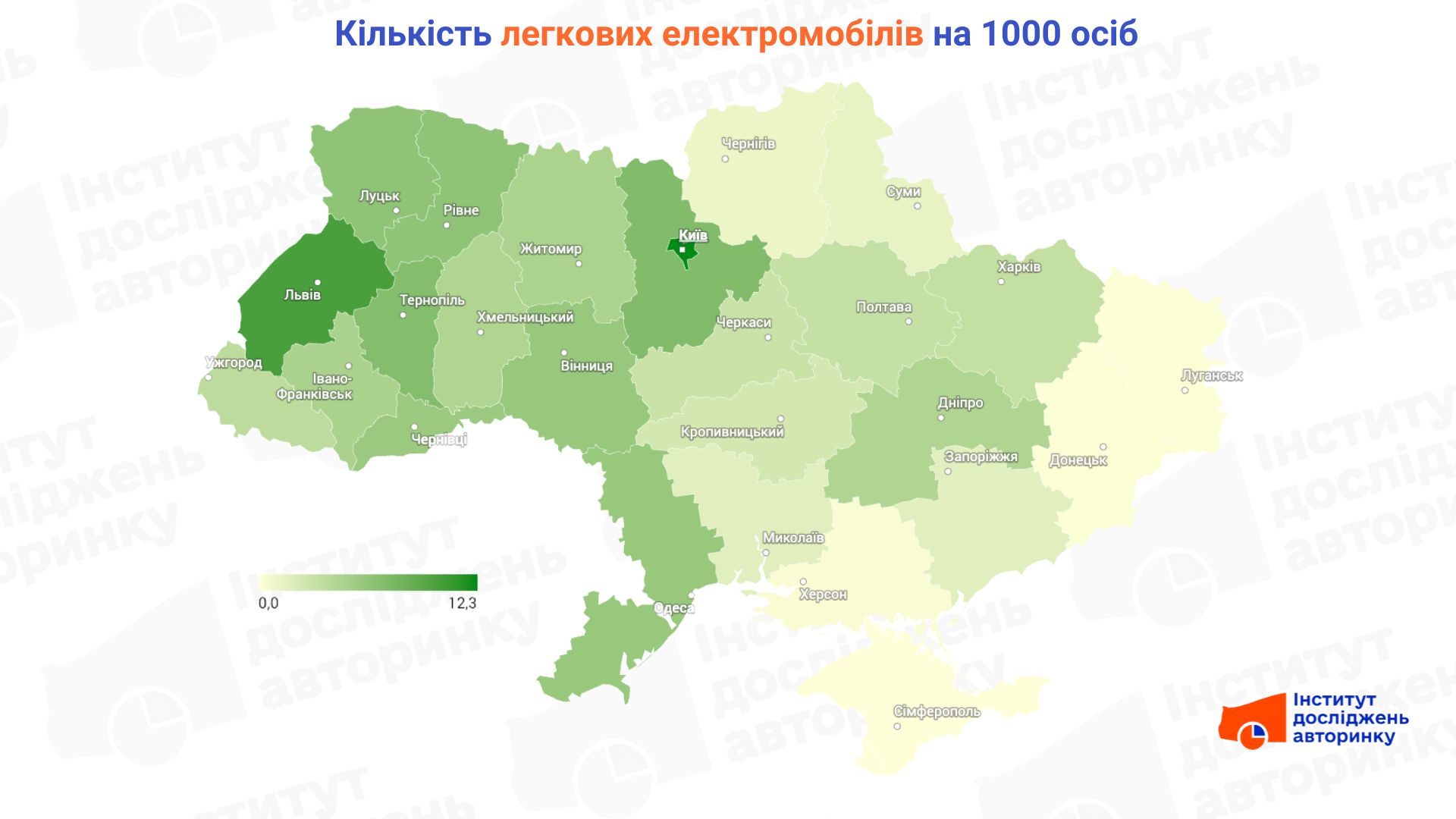The national average number of electric cars per 1,000 population is 4.5 units. However, as our rating shows, this is an average value without any details — just a "temperature in the hospital".
Leaders of electromobility
The real “electric beacons” are Kyiv (12.3) and Lviv region (10.2). Their leadership is explained, on the one hand, by the highest purchasing power of the capital, and on the other hand, by the proximity to the European borders, which ensures a stable flow of used electric cars. These regions are almost three times higher than the national average.
- Order turnkey electric cars from West Auto Hub
The western and central regions are also holding strong, and are included in the Top 6: Kyiv region (7.1), Ternopil region (7.0), Volyn region (6.4), and Rivne region (6.4).

Outsiders: Where are the chances of seeing an electric car the least?
Unfortunately, the electric wave has not yet reached the eastern and southern regions, where the chances of encountering an electric car on the street are close to zero.
The lowest rates were recorded in the regions that were most affected by the fighting and have a difficult economic situation: Kherson (0.3), Donetsk (0.2) and Luhansk (0.1) regions. In these regions, the number of electric vehicles per 1,000 people is ten times lower than in the capital.

European perspective
In comparison, Ukraineʼs 4.5 electric cars per 1,000 people actually look quite modest. For example, in Norway (the world leader in EV saturation), this figure has long exceeded 160 BEV cars per 1,000 people, in Germany — about 29, in the UK — 23. We are closest to Hungary, where there are 4.6 BEVs/1,000 people, and we are ahead of Poland (2.6) and Bulgaria (2.8).
However, if we take our “electric flagship” Kyiv (12.3), it can quite compete with some European cities or smaller countries that have only just begun mass electrification. This gives hope that, under favorable conditions, Ukraine has the potential to quickly catch up with the leaders.
Conclusion
Despite the high interest in electric transport, the Ukrainian car fleet is currently only at the beginning of this path — the total share of "electric cars" in the fleet is only 1.6%. The indicator of 4.5 electric cars per 1,000 people takes on special significance when we recall that in general, there should be about 267 passenger cars of all types per 1,000 people in Ukraine*. This means that the share of passenger cars of the BEV group in the total fleet is still negligible, and their concentration is extremely uneven. Despite frequent mentions of the word "record" in the media regarding the electric transport segment, statistics prove that this segment is currently only "learning to crawl" and will only prepare to get on its feet in the future.
*About the data:
- BEV Fleet: Own aggregated resources of the Automotive Market Research Institute. Current data on the electric vehicle fleet is available for purchase in the form of an interactive dashboard.
- Population: Official data from the State Statistics Service of Ukraine as of 2020 were used.
- Limitations: The study does not include information on temporarily occupied Crimea. Please be understanding of the possible error, as there is currently no accurate data on the number of cars that have finally left Ukraine through emigration, remained in the post-war period, or were stolen or destroyed as a result of hostilities.
Subscribe to the Telegram channel of the Auto Market Research Institute to receive information first, without advertising and spam.



